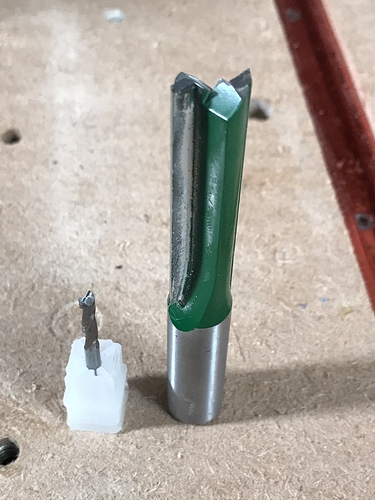That is definitely true, this thing throws chips across the room and goes through the wood ridiculously fast at 22,000 RPM, I’ve no idea how big a cut it will take yet because it’s just scary and holding the workpiece solidly enough has become the issue. Plywood at 10mm DoC 5mm WoC and 2,000mm / min (0.05mm per tooth) and it wasn’t bothered. The workpiece on the other hand was vibrating despite being clamped flat on the spoilboard so maybe that 0 degree helix vibration theory…
